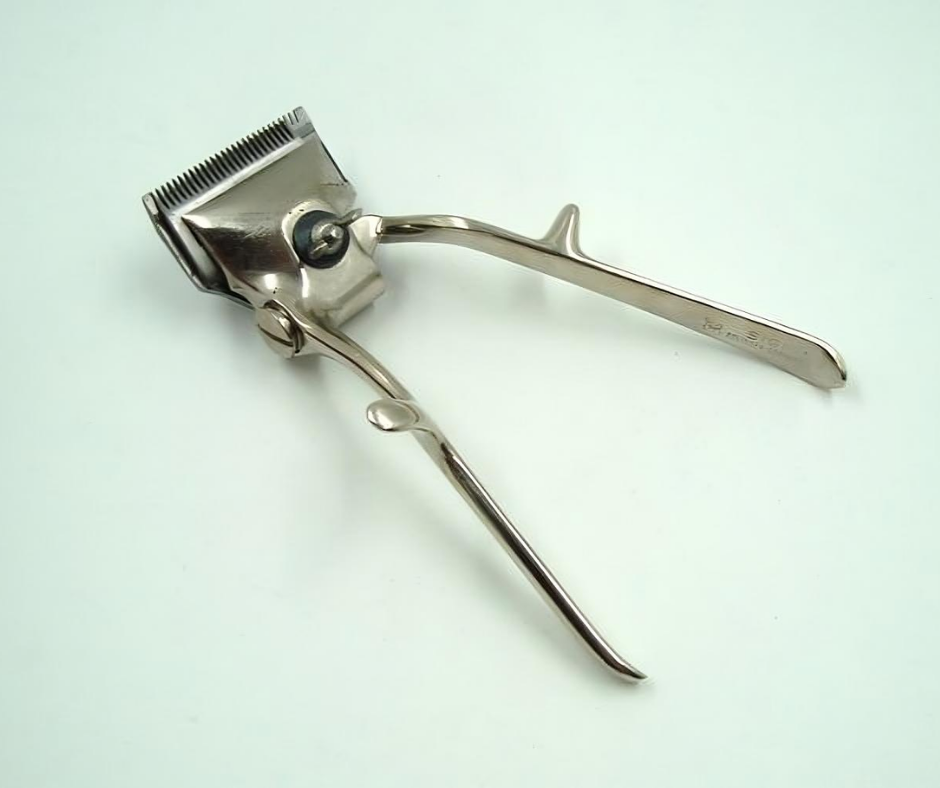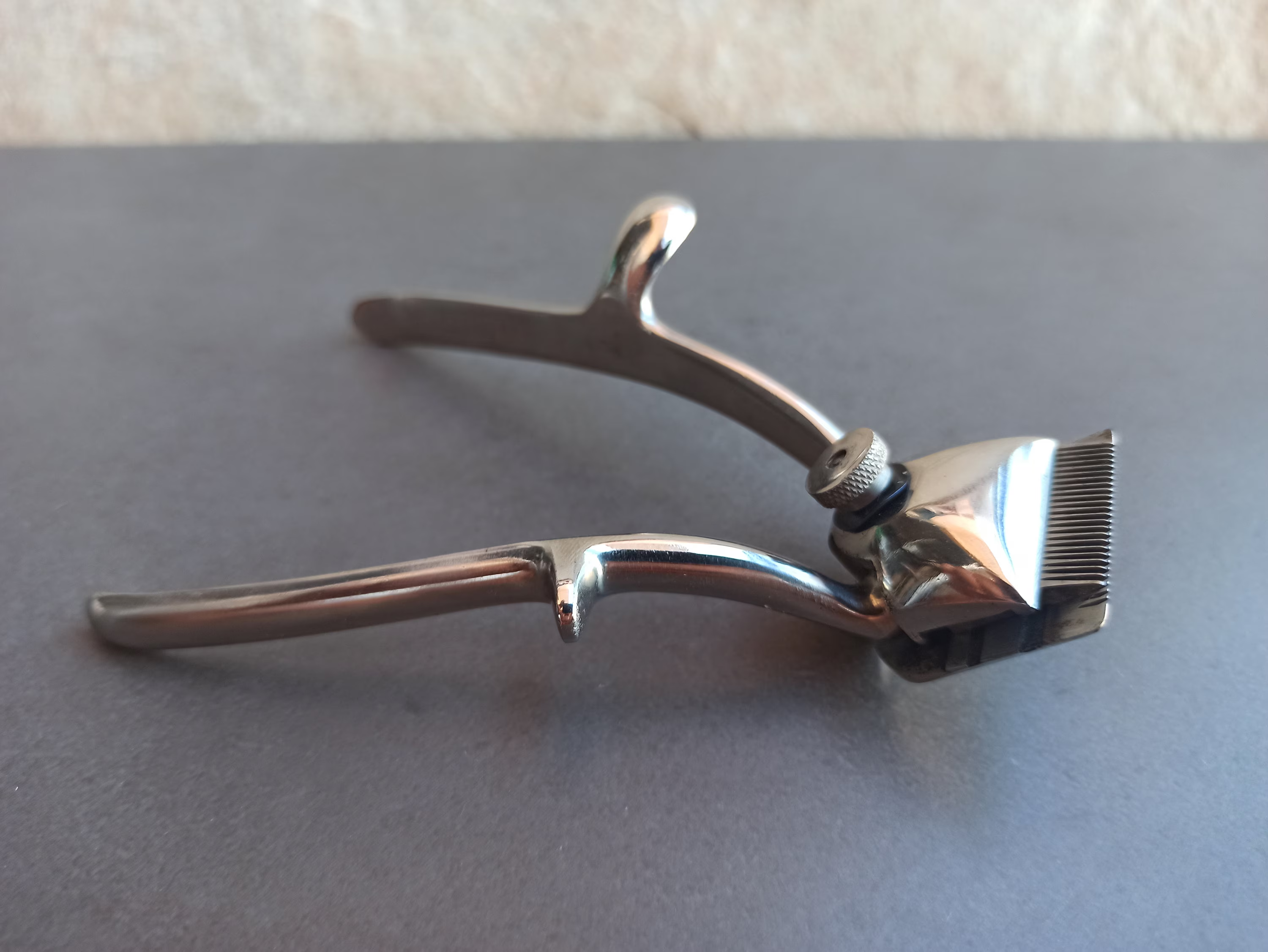The vintage hand clipper, also known as the manual hair trimmer, holds a fascinating place in grooming history. Dating back to the late 19th century, this tool was once the cornerstone of barbershops and households alike, long before electric clippers took over. Its simple yet effective design, combined with durability and precision, made it the go-to choice for professional barbers and individuals who valued a neat and stylish appearance. In a world that now embraces electric and digital tools, the vintage hand clipper remains a celebrated artifact of craftsmanship and tradition.
The Origins of the Vintage Hand Clipper

The journey of the hand clipper began in the late 1800s, when the need for efficient and precise hair cutting tools became increasingly important. Before electric clippers were even imagined, barbers and everyday individuals needed a reliable tool to trim hair evenly and consistently. Enter the hand clipper—an innovative device meticulously crafted from high-quality steel, featuring two rows of sharp, comb-like teeth that worked in tandem when the handles were squeezed together.
This scissor-like action allowed the user to achieve a clean, even cut. The sturdy steel construction meant that these clippers were not only effective but also built to last. They were versatile, easy to maintain, and required no external power source, making them ideal for personal grooming at home or in barbershops.
Why Hand Clippers Were a Staple in Early Grooming
The popularity of the manual hair trimmer surged during the late 19th and early 20th centuries. These hand-operated tools became essential in barbershops, allowing barbers to provide precise and stylish haircuts with a level of control that manual scissors alone couldn’t achieve. The ergonomic design of the hand clipper, with its easy-to-grip handles, ensured that barbers could use them for extended periods without causing hand fatigue, even when managing a long line of clients.
For home use, the hand clipper was equally popular. Many households owned a pair for personal grooming, allowing individuals to maintain clean and tidy haircuts without needing to visit a barber frequently. The ease of use, combined with the clipper’s versatility in achieving various hair lengths and styles, made it a favorite among families.
The Design: Simple Yet Ingenious
At first glance, the vintage hand clipper might seem like a basic tool, but its design was ahead of its time. The two rows of teeth worked in perfect harmony, moving against each other as the handles were squeezed. This ensured that every snip was clean and precise, cutting hair without pulling or causing discomfort. The blades were sharp, sturdy, and easy to maintain, with regular oiling and sharpening ensuring long-lasting performance.
The steel construction was key to the hand clipper’s longevity. Unlike today’s electric models, which often feature plastic components, the hand clipper was built to withstand years of use without significant wear and tear. Its durability is one reason why so many vintage hand clippers are still found in working condition today, cherished by collectors and enthusiasts alike.
The Rise of Electric Clippers: The Shift in Grooming Tools
As with many tools, the introduction of electricity in the 20th century changed the landscape of grooming. In the 1920s, electric hair clippers began to appear, offering a faster and more effortless way to cut hair. These models were powered by small motors, reducing the manual effort required and enabling barbers to work even more efficiently.
The convenience and speed of electric clippers made them an instant hit, and over time, they became the dominant tool in barbershops. The fast-paced modern lifestyle meant that clients wanted quicker haircuts, and electric clippers delivered. As a result, the demand for manual hand clippers began to wane, especially in urban areas where electricity was readily available.
Why Vintage Hand Clippers Still Matter Today

Despite the widespread adoption of electric clippers, the vintage hand clipper never entirely disappeared. In fact, it remained a staple in many barbershops and homes, especially in rural or remote areas where electricity was unreliable or unavailable. Even today, there’s a certain appeal to these hand-operated tools that keeps them relevant in the world of grooming.
Collectors and enthusiasts appreciate vintage hand clippers not only for their craftsmanship but also for their historical significance. These tools represent an era when quality and longevity were paramount, and they serve as a reminder of a time when grooming was more of an art form than a quick task.
In recent years, there has been a resurgence of interest in traditional barbering techniques. Many modern barbers are turning back to the use of vintage grooming tools, including hand clippers, as part of the growing trend of artisanal and bespoke grooming services. These professionals recognize the skill and technique required to master hand clippers, and they appreciate the level of precision that only a manual tool can provide.
The Lasting Legacy of the Vintage Hand Clipper
While electric clippers may dominate the market today, the vintage hand clipper has left an indelible mark on the grooming industry. Its contribution to shaping modern barbering tools and techniques cannot be understated. The hand clipper paved the way for the tools we use today, and its design remains largely unchanged in some specialty products.
More than just a tool, the vintage hand clipper stands as a testament to a time when craftsmanship, precision, and attention to detail mattered most. It represents the art of grooming in its purest form, where technique and skill took precedence over speed and convenience. For barbers, collectors, and enthusiasts, the vintage hand clipper remains a symbol of tradition and quality—one that continues to inspire respect and admiration.
Conclusion: Celebrating the Art and Tradition of Hand Clippers
The vintage hand clipper is more than just an old-fashioned grooming tool. It’s a reminder of the ingenuity and craftsmanship of a bygone era. Its lasting legacy is felt not only by collectors and barbers who appreciate its history but also by anyone who values tradition in a world increasingly driven by technology.
Though electric clippers may be faster, the artistry and skill required to use a manual hand clipper effectively is something that can’t be replicated by modern machines. As the world of grooming continues to evolve, the vintage hand clipper will always hold a place of honor in the hearts of those who appreciate the art of the perfect cut.


